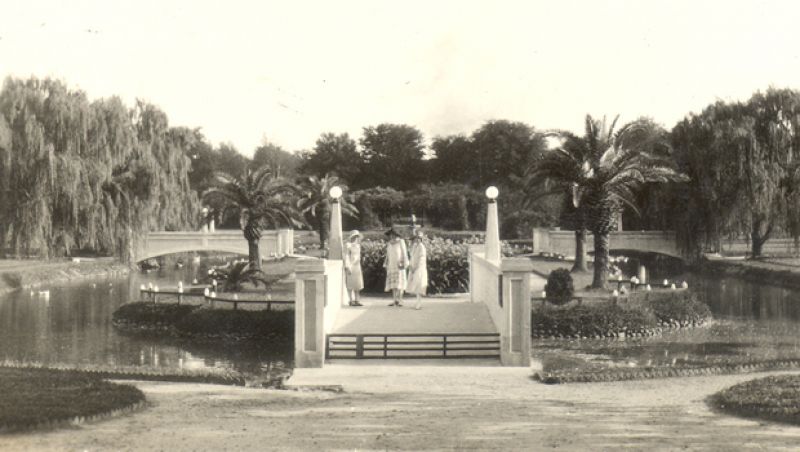
Escaping the scorching summer sun is easy when oak trees are plenty, but there was a time in Hampton Park when shade was scant—when, in 1900, extravagant yet impermanent buildings were constructed for the South Carolina Interstate and West Indian Exposition. Areas excavated for the exhibition included the Sunken Gardens (pictured here in the ’20s), but as the attraction closed in 1902, and the buildings were torn down soon after, the land needed some love. It formally became Hampton Park in 1903, and the architects from the famed Olmsted, Olmsted & Eliot were in charge of its redesign. John Olmsted’s first order of business? Planting several hundred oaks. Over time, Hampton Park changed immensely, due in part to the Citadel’s relocation and to suburban flight. It was revived in the 1980s, though access to the island amid the Sunken Gardens’ pond was removed. Thankfully though, there’s still a lot of shade.
(Photograph courtesy of Margaretta Childs Archives at Historic Charleson Foundation)